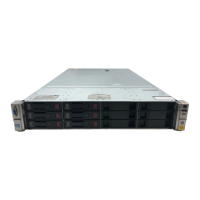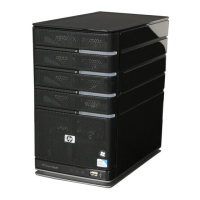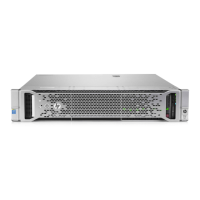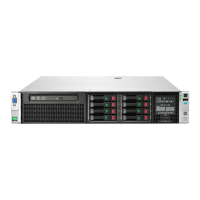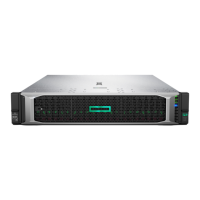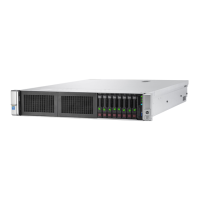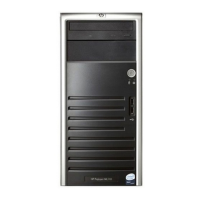When monitoring disk status from the StoreOnce GUI, the Location field on the Hardware tree
identifies the bay in which a disk is located. (Expand Storage Clusters to find drives within a
specific drawer and drive enclosure.)
Figure 11 Drives page on StoreOnce GUI
Distributing the disk drives correctly
The initial eleven disks (plus four hot-plug disks) in the disk enclosure are installed and
pre-configured as follows when the HPE StoreOnce 4900 Backup is installed.
Table 5 Disk bays populated at installation
Disk Enclosure 1
Drawer 2Drawer 1
Two spare hot disks in bays 34 and
35.
Two spare hot disks in bays 34 and
35 and eleven disks in slots 23-33.
Initial storage configuration
Disks in HPE StoreOnce 4900 44 TB Capacity Expansion kits are added to specific bays in the
drawers within the disk enclosure according to the sequence in which the disk set is being added.
Each drawer has a label that specifies the sequence in which each set of 11 disks must be
installed. This sequence is mandatory for StoreOnce software support.
Table 6 Populating disk bays with Capacity Expansion kits
Drawer 2Drawer 1
Add eleven disks to slots 23-33Do not change+ Expansion kit 1
Do not changeAdd eleven disks to slots 12-22+ Expansion kit 2
Add eleven disks to slots 12-22Do not change+ Expansion kit 3
Do not changeAdd eleven disks to slots 1-11+ Expansion kit 4
Add eleven disks to slots 1-11Do not change+ Expansion kit 5
Ordering the correct replacement disk for a failed disk
It is important to replace a failed or predictive failed disks as soon as possible. Multiple disk
failures within the same array will result in complete data loss.
Note that ALL enclosures of storage must be working for the system to operate; if the RAID fails
on any one enclosure due to exceeding the maximum amount of failed disks in a pool then ALL
data is lost.
IMPORTANT: HPE strongly recommends replacing a failed disk with a fresh disk from the
factory. Do not substitute a disk from another RAID set.
It is important to identify whether the disk is in the server unit or the attached shelf, because
different disks are used in the two locations and the carriers are different.
Ordering the correct replacement disk for a failed disk 29

